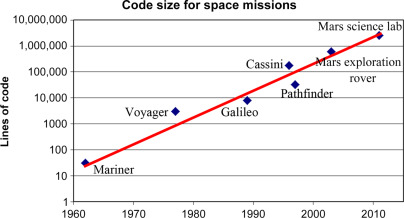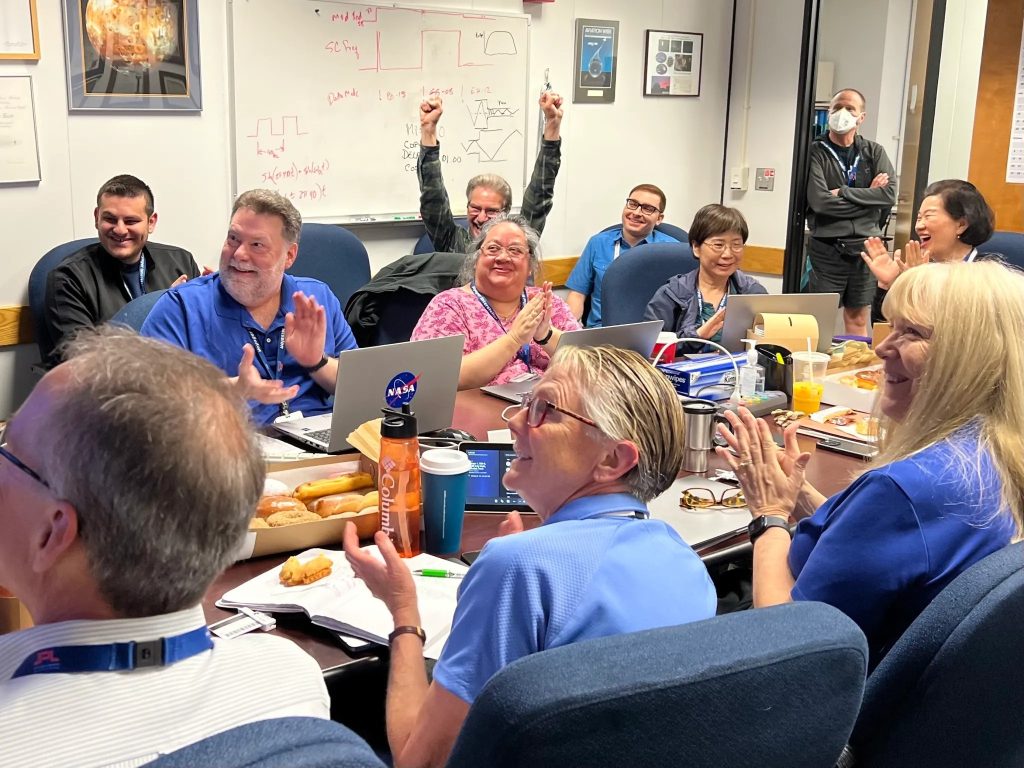This story is just mind blowing. I can’t even think of an analogy that gets close to it.

25 April 2024 — My fascination with space and astronomy began as a child. One of our neighbors worked at the Hayden Planetarium in NYC and he used to get passes for his kids and me and our mates.
It continued with trips my family would make to visit an aunt and uncle who lived in Florida near Cape Canaveral which was the location of NASA’s launch complex. My uncle worked there and often got me into the facilities.
It was a wonder. I watched many a launch, live, and got to meet space scientists and engineers and even a few astronauts-in-training.
I became fascinated by astronomy, going through a series of telescopes and making multiple visits to planetariums and observatories around the U.S., and eventually across Europe. It resulted in my completing a minor degree in physics when I attended university.
The passion continued. I still read a tsunami of science material every month (usually space/astrophysics related). I followed with delight the European Space Agency launch of Rosetta, with Philae, its lander module, and its subsequent landing on a comet 10 years later.
ROSETTA! IMAGINE! A space vehicle launched in March 2004 … with technology on board that had been developed in 1999 and 2000 (space technology usually takes 4-5 years of testing until proven before put on board a spacecraft). It then landed, as planned, 10 years later, in November 2014 – with 92% of its technology still working perfectly!
My fascination continues to this day.
In one of my many visits to CERN in Geneva (home to the Large Hadron Collider), I have attended sessions to learn how to write computer code to track planets and stars … and to learn the basics of observatory science. Every year at the world’s largest industrial fair, the Hannover Messe, CERN and the European Space Agency always present wondrous technologies they have developed, many that find applications not only in space but in our earthly world.
All of this came flooding back this morning as I read the following, most incredible story, about software and technology and human ingenuity.

ABOVE: After receiving data about the health and status of Voyager 1 for the first time in five months, members of the Voyager flight team celebrate in a conference room at NASA’s Jet Propulsion Laboratory on April 20, 2024.
And they celebrated with good reason.
For the first time since November 2023, NASA’s Voyager 1 spacecraft is returning usable data about the health and status of its onboard engineering systems.
Note to readers: Voyager 1 was launched in September 1977.
The next step is to enable the spacecraft to begin returning science data again.
The probe and its twin, Voyager 2, are the only spacecraft to ever fly in interstellar space (the space between stars). Voyager 1 stopped sending readable science and engineering data back to Earth on Nov. 14, 2023, even though mission controllers could tell the spacecraft was still receiving their commands and otherwise operating normally.
In March 2024, the Voyager engineering team at NASA’s Jet Propulsion Laboratory in Southern California confirmed that the issue was tied to one of the spacecraft’s three onboard computers, called the flight data subsystem (FDS). The FDS is responsible for packaging the science and engineering data before it’s sent to Earth.
The team discovered that a single chip responsible for storing a portion of the FDS memory – including some of the FDS computer’s software code —- isn’t working.
The loss of that code rendered the science and engineering data unusable. Unable to repair the chip, the team decided to place the affected code elsewhere in the FDS memory.
But no single location is large enough to hold the section of code in its entirety.
So they devised a plan to divide the affected code into sections and store those sections in different places in the FDS.
And to make this plan work, they also needed to adjust those code sections to ensure, for example, that they all still function as a whole. Any references to the location of that code in other parts of the FDS memory needed to be updated as well.
The team started by singling out the code responsible for packaging the spacecraft’s engineering data. They sent it to its new location in the FDS memory on April 18th.
Note to readers: a radio signal takes about 22 ½ hours to reach Voyager 1, which is over 15 billion miles (24 billion kilometers) from Earth, and another 22 ½ hours for a signal to come back to Earth.
When the mission flight team heard back from the spacecraft on April 20th, they saw that the modification worked: for the first time in five months, they have been able to check the health and status of the spacecraft. During the coming weeks, the team will relocate and adjust the other affected portions of the FDS software. These include the portions that will start returning science data.
Voyager 2 continues to operate normally.
Launched over 46 years ago, the twin Voyager spacecraft are the longest-running and most distant spacecraft in history. Before the start of their interstellar exploration, both probes flew by Saturn and Jupiter, and Voyager 2 flew by Uranus and Neptune.
Simply an epic feat. A celebration of how 25 individuals on a team came together to pool their knowledge, and solve a complicated and difficult problem – setting aside individual interests to achieve collective success.